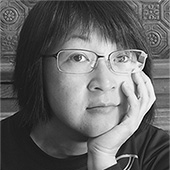Our travels gave us the opportunity to meet many people face to face and
- get a better understanding of how UX professionals are thinking about and incorporating UX design into their project work
- understand where UX design knowledge currently exists in each locale
- learn what UX topics engage or pique people’s interest
- determine what UX topics we or others should be teaching regionally and what we need to learn more about
- consider how this information might feed into a UX design educational program in Asia and how associations like UPA and IxDA could help
- understand how our activities could complement the superb UX resources that are available online, local design school programs, and UX design conferences—both regional and global
Our experiences have given us a deeper understanding of the state of UX design in Asia. Now that we’re back in Hong Kong—to refresh before our travels start again in 2011—we’ve taken the time to reflect on the people we’ve met and the conversations we’ve had over the last few months.
We’d like to take this opportunity to share what we’ve discovered with the UXmatters community, including our observations and some potentially global insights we’ve derived from them. We’re still exploring these ideas, and some of our thoughts are still a bit raw, so we’d also like to pose some questions to the UXmatters community. Perhaps you can help us better understand whether what we’re seeing exists in Asia alone or other markets have similar traits.
We hope our observations and insights are helpful to those of you who are keeping an eye on UX design in Asia, perhaps have an interest in working in Asia, or want to travel to Asia and share your UX design knowledge by presenting to the local UX community.
What We’ve Discovered
Here are our key observations and learnings.
Individual Positioning
People are starting to ask themselves: How am I perceived within my organization? How do I perceive myself? How am I and the work that I do positioned within my organization? People don’t always have clear answers to these questions. And some people feel powerless to make any real change through their UX design roles and the products they work on.
Management, sometimes even CEOs—with varying degrees of UX design knowledge—often make design decisions, then pass their decisions along to UX designers, who they see as people who should either simply implement their management-led design decisions or just make things look pretty. This perception of User Experience also means we should consider how UX design offices in Asia might be positioned within and outside the region and what their role is in design. How can we change this perception?
Balancing Strategic Thinking and Knowledge of Tools
Many UX designers appreciate the need for strategic thinking and assess which business cultures are more receptive to what we offer. However, UX designers do not always know how to create and drive UX strategy, and they may be unsure of how to communicate UX strategy to a business. Some UX designers manage to balance strategic thinking with their application of design tools. Others just don’t care about strategy and instead prefer to focus on learning the tools, one by one, that enable them to do their job better and design better products. This is absolutely fine, by the way. What tools should we teach and in what order? What tools have the most impact? How can we teach strategic thinking?
External Versus Internal UX Design Roles
Dan has been a practicing UX professional for 15 years—10 of those years outside organizations, as a consultant. So perhaps it’s easier for Dan to voice his opinions and have leaders of organizations perceive him differently from UX professionals working internally, who may be constrained by poor decisions, politics, a lack of product vision, UX leaders who don’t sell or represent their UX team’s services well, or a general lack of organizational understanding of user experience. How can we help people working internally within organizations to better champion UX design?
UX Design Leadership
Some feel that UX leadership![]() is best left to people who are either in management roles or have Senior on their business cards. They hesitate to lead efforts toward promoting and growing UX design in either their work or their community. How can you recognize when you are ready to lead? What characteristics make an effective leader? Once you have recognized UX leaders in your local communities, what should they do to help promote UX design in your markets?
is best left to people who are either in management roles or have Senior on their business cards. They hesitate to lead efforts toward promoting and growing UX design in either their work or their community. How can you recognize when you are ready to lead? What characteristics make an effective leader? Once you have recognized UX leaders in your local communities, what should they do to help promote UX design in your markets?
Design Thinking
There seem to be huge disconnects about what makes for great design, who can facilitate design, and how design can really help a business. For some businesses, a UX designer’s role is simply to make a product look pretty. On the flip side, there are some designers who only want to make things pretty. So, what do we need to teach both businesses and UX designers to help them create better products?
Manufacturing Versus Designing
Some markets with a strong history in manufacturing—like mainland China and Taiwan—are beginning to see changes as local brands start to design and develop their own products and, in some cases, international brands set up local design and research centers in Asia—for example, HTC, Philips, Dell, and Autodesk, to name a few. How do you create the right mix of skills—either from within and outside a region—to build a culture that can make great products? How do you move away from copying products to crafting your own brands? What does it mean to be designed in Asia? How can local educational programs help?
What’s My Career Path?
People are confused about both their current role and what lies ahead for them, in terms of learning and their own career planning. Some of them do not understand the differences between a junior and a senior UX designer. What if I don’t want to pursue a management path; what are my options? Who in my locale can help mentor me toward a better understanding of my career path?
Clear Communication
Language and locale do not bound the problem of poor communication. People communicate ineffectively in all languages. Communicating poorly in your own language is one thing; translating poor communication for other cultures adds a second layer of confusion, and things get messy fast. It’s possible to teach clear communication, which is key for activities like writing user research plans, defining goals, running user research, analyzing data, working with users, reporting research results to stakeholders, communicating design, and creating designs.
Teaching UX designers clear communication would go a long way toward helping them better position themselves and their UX expertise within an organization. UX designers need to be able to tell a compelling story about how they arrived at their conclusions and what they mean. How do you teach clear communication?
UX Design Maturity
Every market exhibits its own degree of receptiveness to UX design. Factors that influence a community’s UX design maturity include the following:
- size of the community
- number of practitioners
- number of consultancies
- local conferences
- local association chapters
- organizations’ spending on UX design
- government RFPs (Requests for Proposals) that include UX design terminology
How do you determine where a growing UX design market stands against more mature markets? Where and what are the mature markets and why? What are the variables that define a UX design market and its level of maturity?

